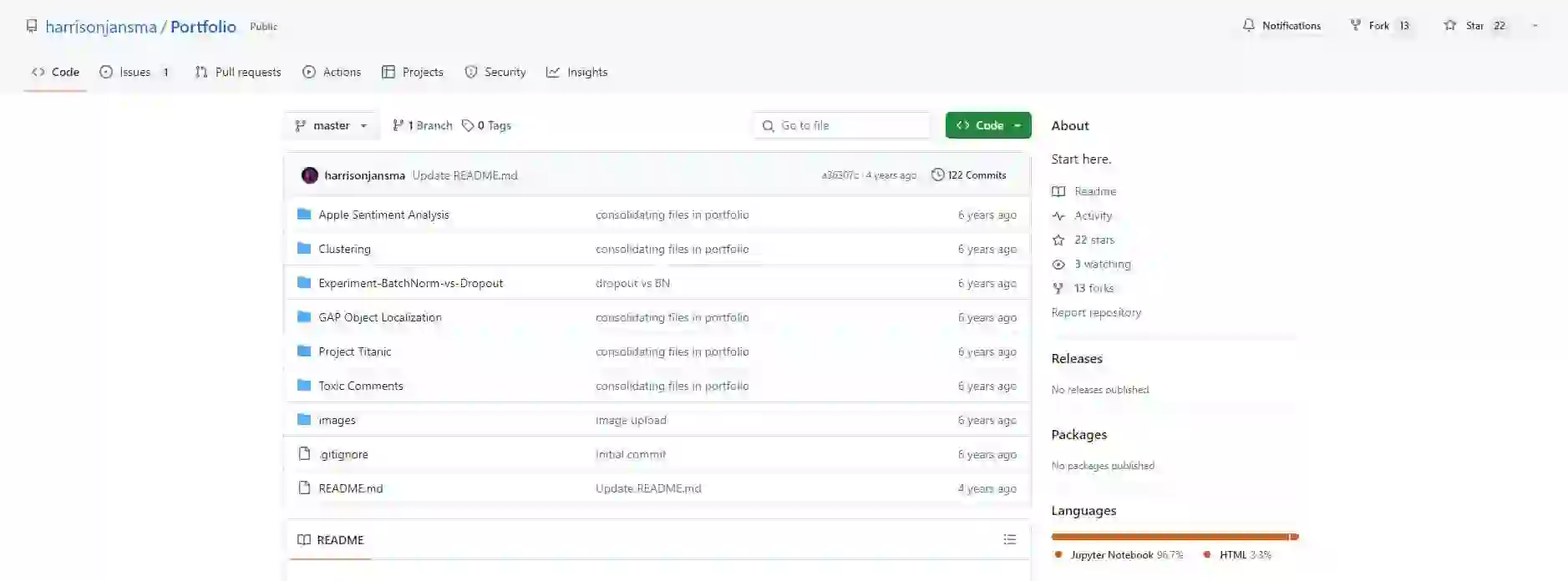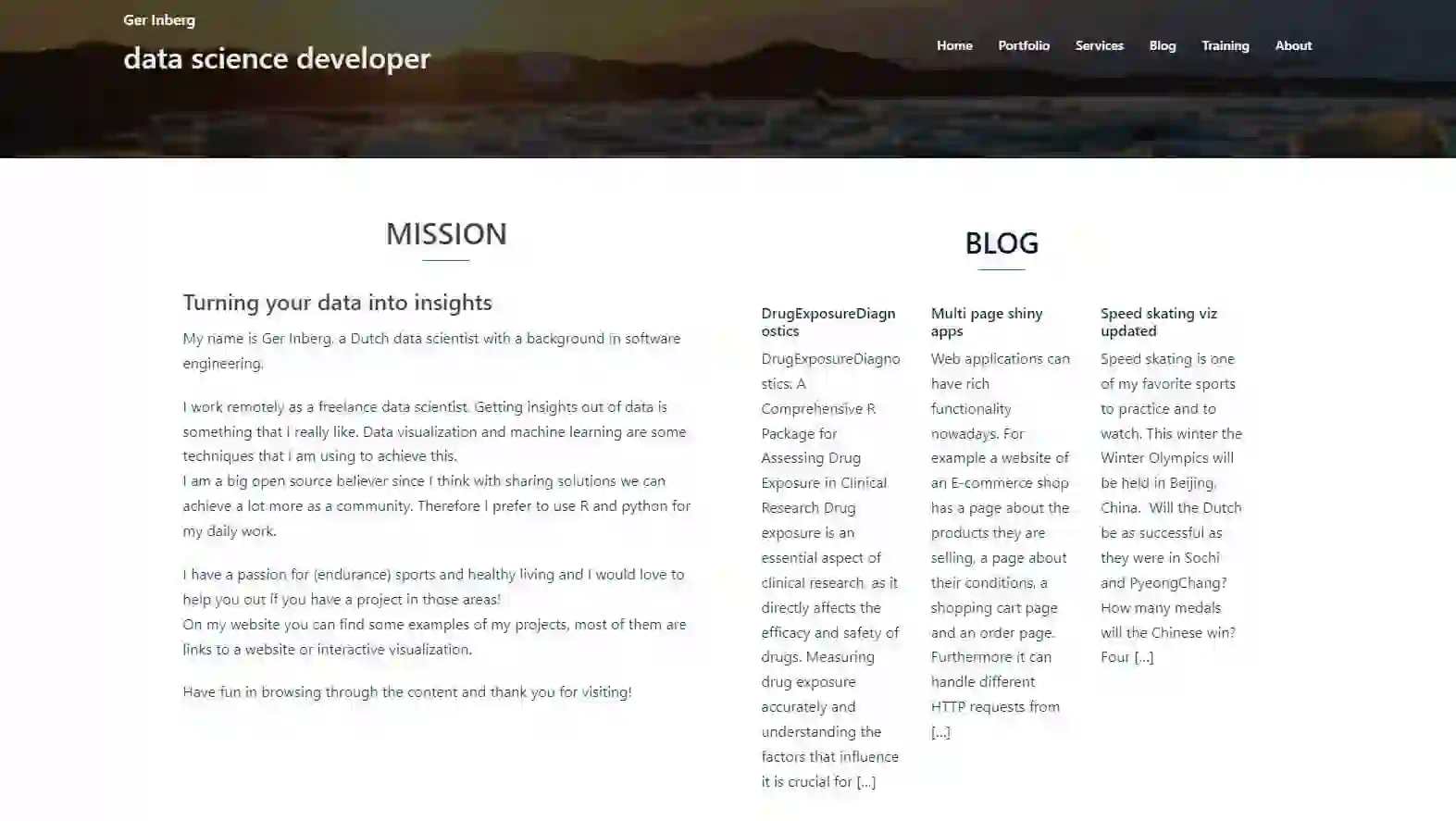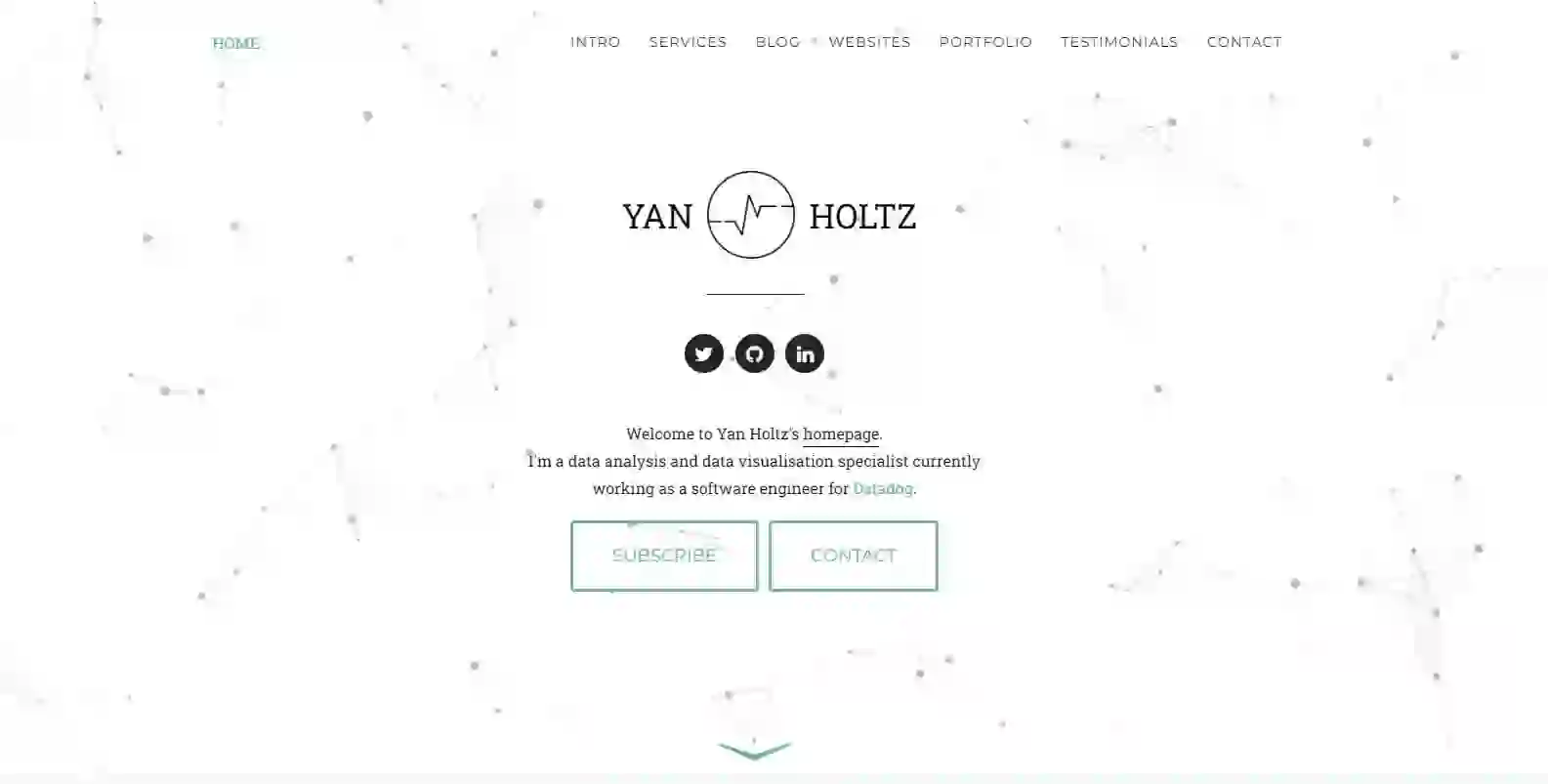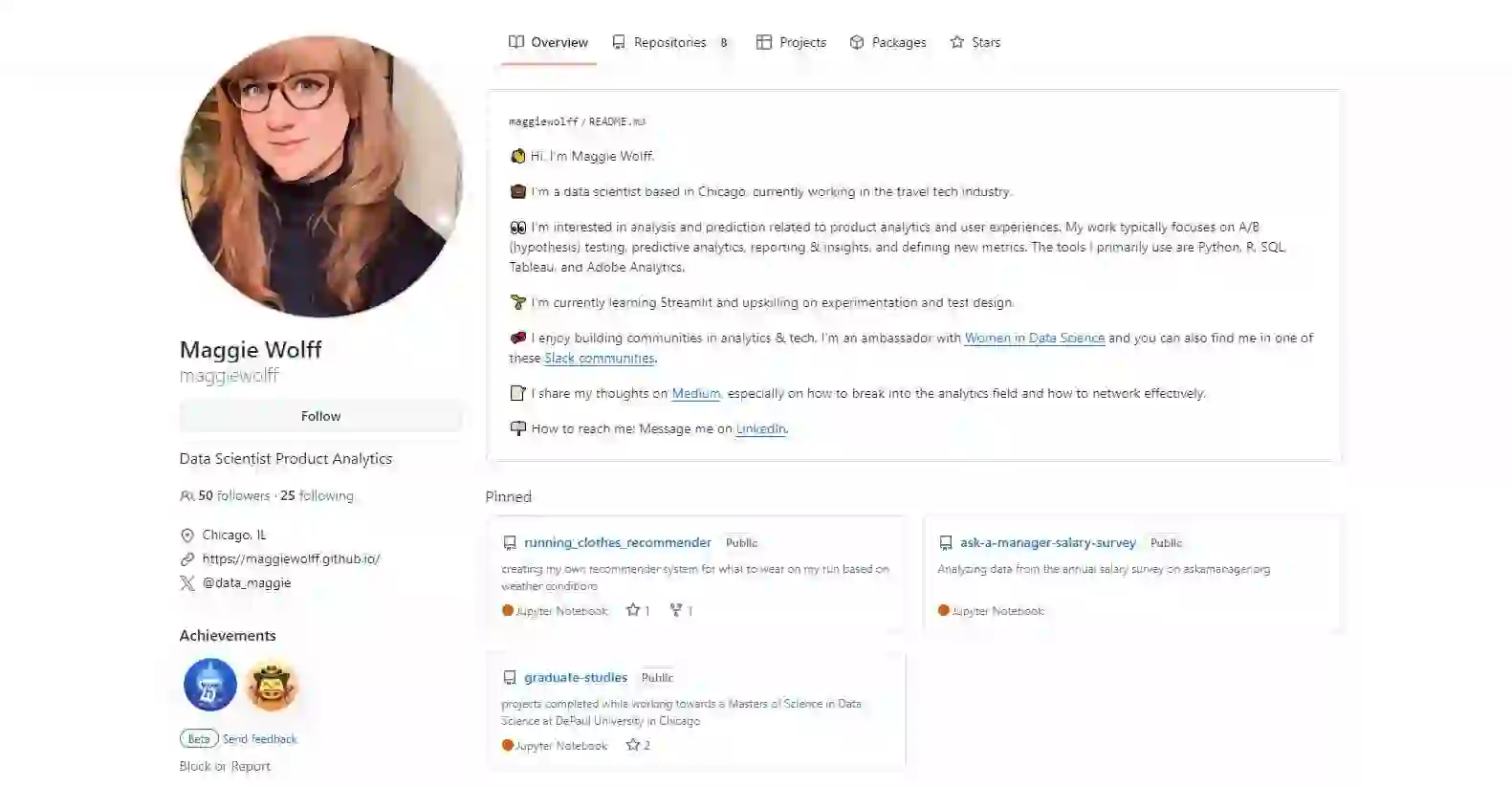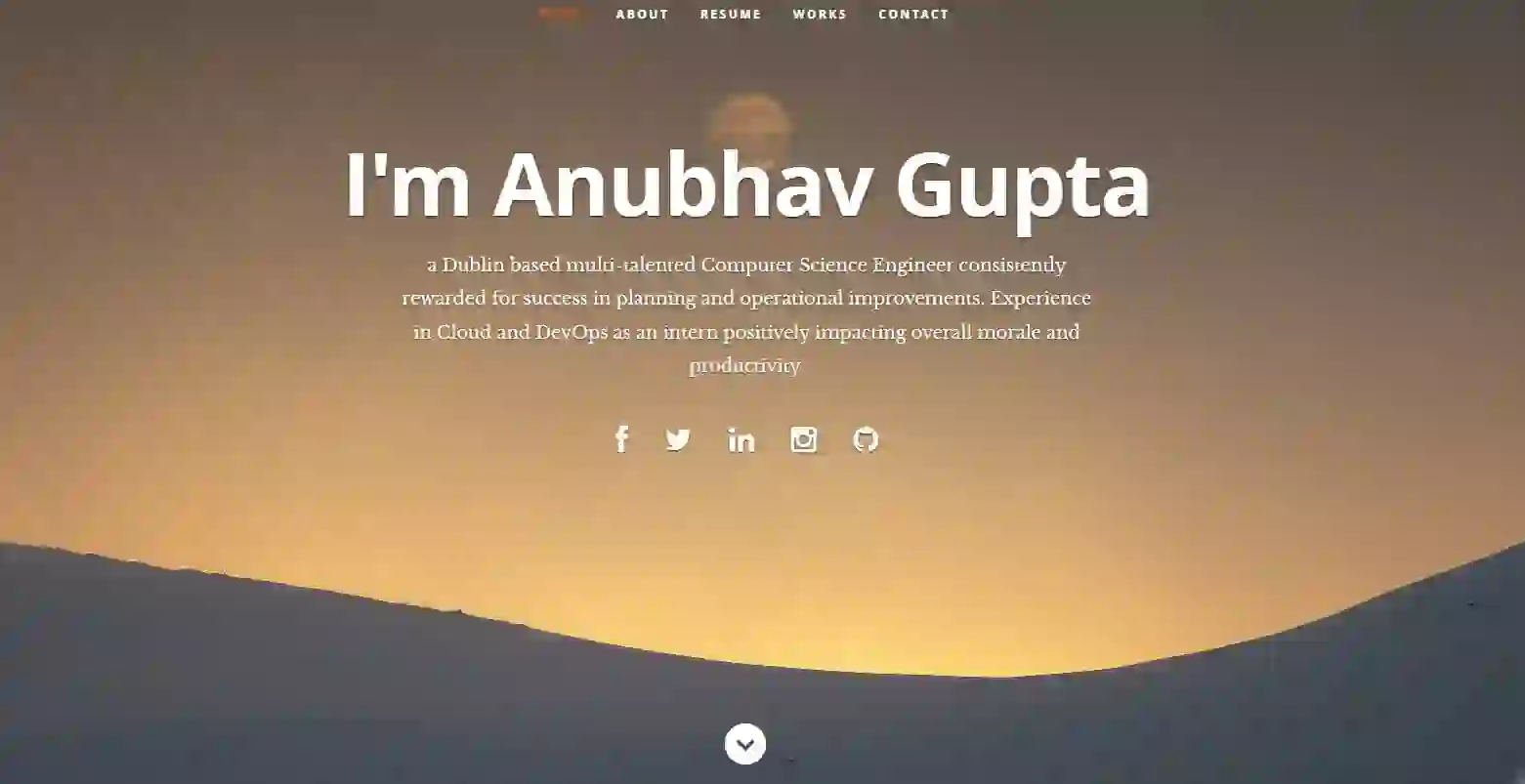In today's data-driven world, a growing number of sectors recognize the importance of data analysts, who derive easy-to-understand insights from complex information. This way, they can help businesses to make informed choices, streamline procedures, and spur expansion.
However, to stand out in a crowded employment market, you must have the requisite skills and knowledge that attracts recruiters and HR managers. For that, you will need a data analytics portfolio to showcase your key skills, expertise and experience. It will help you demonstrate your data processing, analysis, data visualization, and narrative skills.
Typically, a portfolio contains all the projects you might have worked on, certifications and case studies. You can even add client feedback, reviews and ratings to ensure you focus on customer satisfaction, too.
If you’re unsure of how to do so, you can use pre-made templates or create a customized one. In the following sections of this article, we will uncover ways to a data analyst portfolio. But before we do so, let’s find out why a portfolio is important for you:
Why is it important to have a data analyst portfolio for a data analyst?
Potential employers looking to fill data analyst jobs search for candidates who have prior experience and are proficient in the various technical skills and abilities necessary for the job post.
One of the easiest ways to demonstrate that you possess the right skills and are the best for the job post is to have a portfolio of your prior work.
Highlight projects that emphasize your analytical, technical, and problem-solving prowess while demonstrating your communication skills. Finding it hard to optimize your portfolio? Fret not, as we discuss top tips to build an effective portfolio for data analysts below.
ready to make your next career move?
Send us your CV, and we’ll get back to you with a matching data analyst job at EPAM Anywhere
How to build a data analytics portfolio
Listing the data skills mentioned in the job description on your resume is essential, but your portfolio demonstrates your abilities and experience. A full portfolio is a compilation of various data projects you have worked on. Here, we will list down key skills a data analytics portfolio must highlight:
- Technical knowledge
- Strategic planning
- Industry acumen
- Passion for data analysis
- Strong communication skills
Once you've completed your portfolio, it's time to show it to the world. Thanks to digital technology, now you can publish your portfolio online. This way, you increase your chances to get hired by top companies.
The top 3 places to promote your data visualization project portfolio are:
LinkedIn offers a user-friendly interface for managing your data analytics projects on your profile, allowing for easy additions, modifications, and removals. The platform can also double as an online portfolio.
Feel free to upload and share projects in a wide range of content types, as our platform is compatible with various formats such as .jpeg, PDF, PowerPoint, Word, and more.
You can showcase data analyst projects on LinkedIn in your Featured, Experience, or Education sections.
Github
GitHub is a platform that supports and facilitates web and app developers. It is best suited to host your SQL and Python code files as you can easily create a public repository that anyone can access and view.
Since it's free to use, you can easily get a tech-savvy online project portfolio that you can share with prospective clients and recruiters. The best part is you can link these repositories to other social and professional networking accounts.
Kaggle
Kaggle, a cloud environment for Jupyter Notebooks, offers a convenient platform to showcase your data science project ideas and work samples for free. You can display the outcomes of your participation in Kaggle data science competitions and any datasets or code you have created.
What should be in a data analytics portfolio?
Your data analyst portfolio website should be intelligent, easy to navigate, and visually appealing. Here's an overview of what you should include in your data analyst portfolio per data analyst role:
Homepage
Making a solid first impression is crucial since this is where prospective employers land when they visit your portfolio website. Try to make things concise yet informative so the audience can rapidly understand who you are and what you do.
We advise putting a headshot of yourself and a powerful opening sentence on the site, followed by a brief paragraph highlighting your work history.
About Me section
Prospective employers (and any interested surfers) need to be able to find your "About Me" page directly from the site. Here's where you may provide more information about your background, interests, and activities.
Add your contact information and links to other web accounts (such as GitHub, LinkedIn, and X/Twitter) under your "About Me" description.
Your projects
A specific "Projects" section in your data analyst portfolio should highlight the different projects you've worked on.
You may display your work in a variety of ways. For example, you can post your portfolio projects directly on your website or provide an overview of your work with a link to the entire project housed elsewhere (such as GitHub).
It all relies on the specifics of the project, its technological requirements, and your inclination. Many data analysts combine the two methods in their portfolios.
Data analyst portfolio examples
We have compiled ten data analyst portfolio template examples to help you think about, plan, and assemble a template of your own.
Use these pre-made data analyst portfolio example templates to find how to create a data analyst portfolio.
1. Harrison Jansma
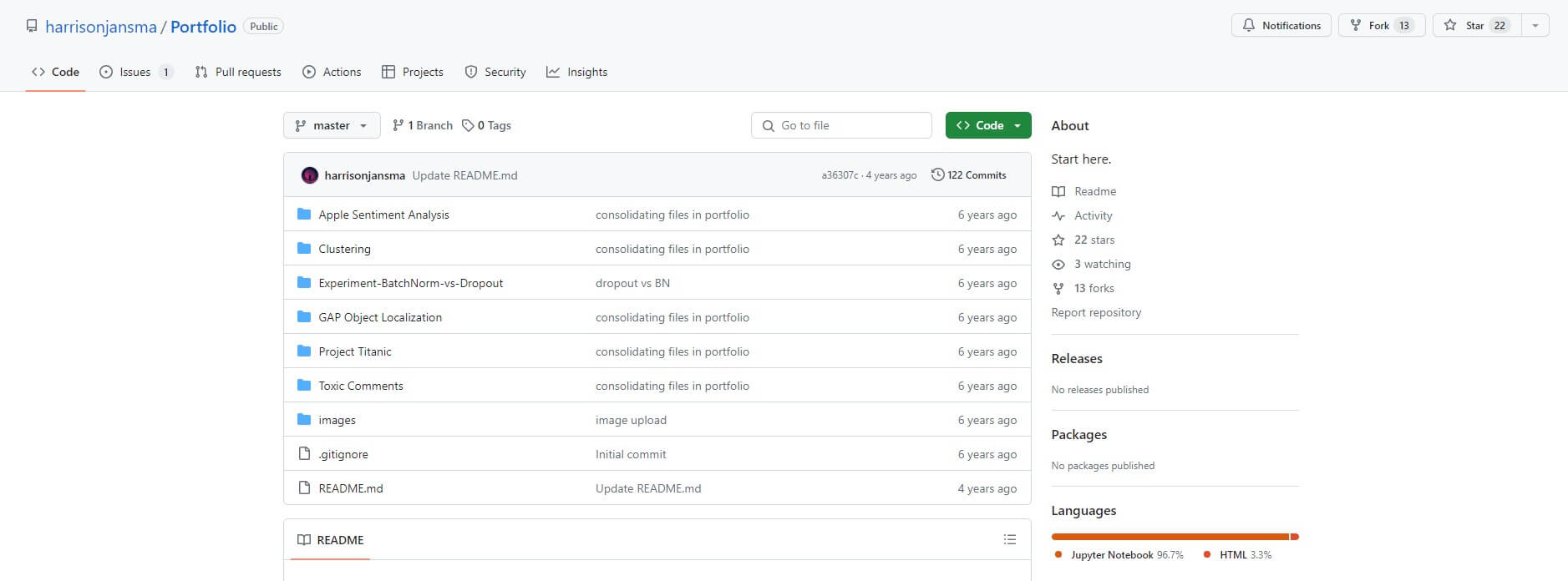
The Harrison Jansma portfolio comprises GitHub and Medium projects. He is a coder and data scientist with DevOps, machine learning, and data analytics expertise. This shows how skilled he is. It's an excellent resource for workers wanting to enter computer science and data science.
Harrison's portfolio in data analytics shows how you can use a portfolio to show off who you are.
With Harrison Jansma's help, we can add style to our portfolios. You can choose how much about yourself you want to share, but Harrison's way of doing things makes him seem more human while still being professional and not bothersome.
2. Ger Inberg

Individual freelancers and small-scale data analytics companies might benefit from visiting Ger Inberg's portfolio page. It shows he is an expert in machine learning, data training, and data representation. His website has examples of his work, services, a blog, and teaching materials.
A simple but valuable choice makes it easy to see that Ger is good at data analysis, machine learning, and web development. Viewers can also sort projects by topic by clicking on them. Then Ger leads us to a page where we can see data visualization apps that he made with R-Shiny, an R package for visualizing data and making dynamic web apps.
Now we can see how good he is at both web applications and design! He displays data within the app and shows off his data visualization and web development skills. This is a great way to show off his skills without drawing too much attention to themselves.
3. Claudia ten Hoope

A career as data analyst may be within your reach if you go at Claudia Ten Hoope's portfolio. Claudia begins by briefly summarizing her qualifications before mentioning the services she offers. The services offered include interactive visualizations, dashboards, training, and data analysis. This is important since these are the core skills required of any data analyst.
Most significantly, a real-life case study is connected to each key skill and ability. You may see them as well in the portfolio section further down. Claudia has given it much thought, as seen by her user experience.
4. Naledi Hollbruegge

The most benefited by Naledi's portfolio are independent data analysts. Portfolios, blogs, and the services it provides are all separate areas combining client work. This shows she knows much about data visualization, Tableau, data processing, and analytics.
The first thing Naledi points out is that she can do all the essential tasks of a data scientist: collecting, handling, and displaying data. Then, she starts immediately with a short introduction and some examples of projects. Naledi's portfolio demonstrates how to make a data analyst portfolio to obtain customers.
5. Tim Hopper
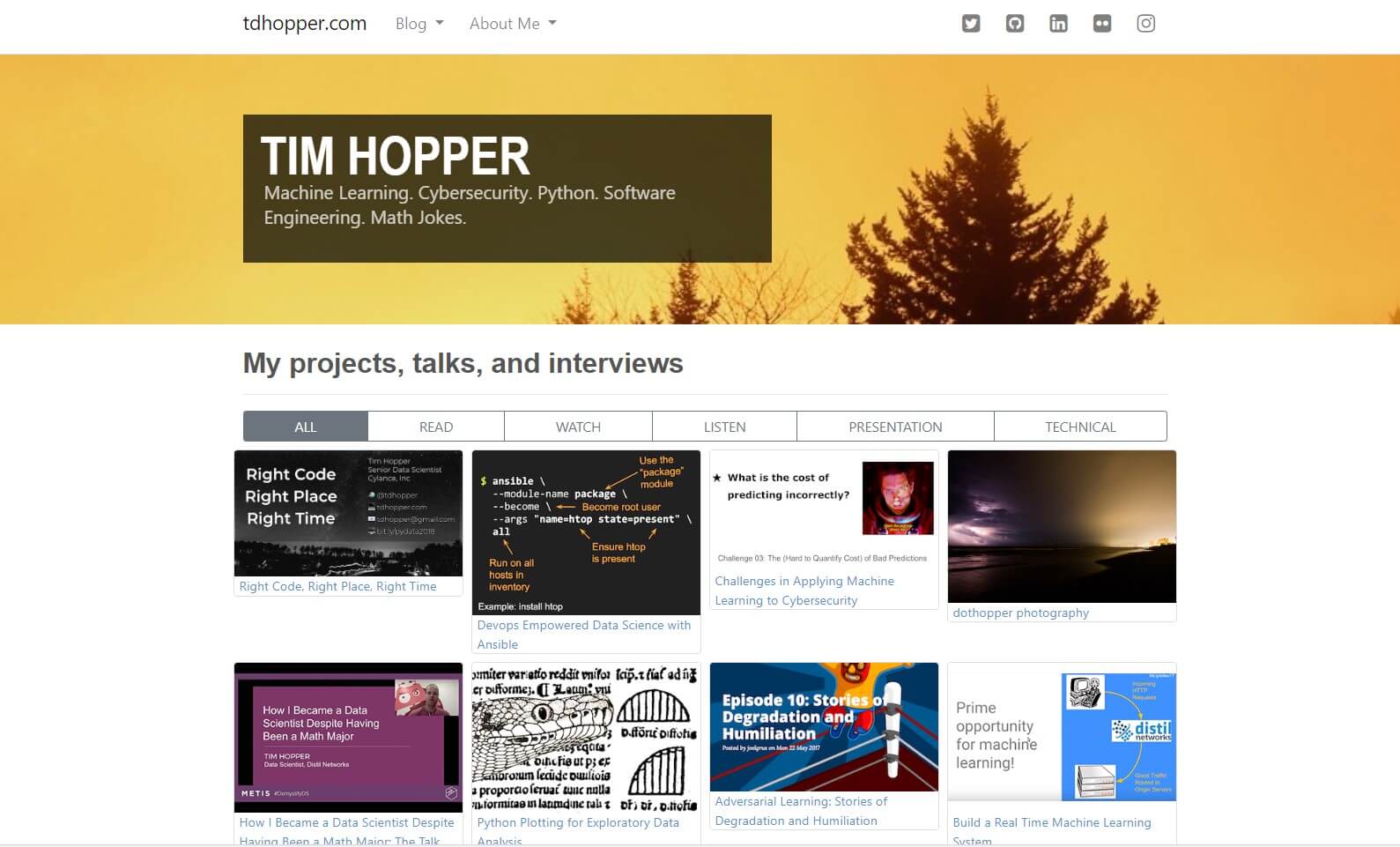
Tim's is an excellent illustration of a multimedia portfolio. Instead of giving us a long list of his past projects, he's used various approaches to show us what he's interested in and what he's good at.
Interestingly, Tim doesn't talk about individual projects in his collection. This is indeed a brave move. Instead, he markets himself as a thought leader and data influencer, writing about his experiences as a data scientist and sharing talks and podcasts about it.
Tim does a great job with this plan, which has a lot of risk but a lot of reward. We can learn from this method, even though it works better for data scientists with more experience. By using articles, videos, and podcasts, he has an excellent reason to add more media to his collection.
He also puts a lot of charm into his website. Just the fact that he has a sense of fun adds extra points to him.
6. Yan Holtz
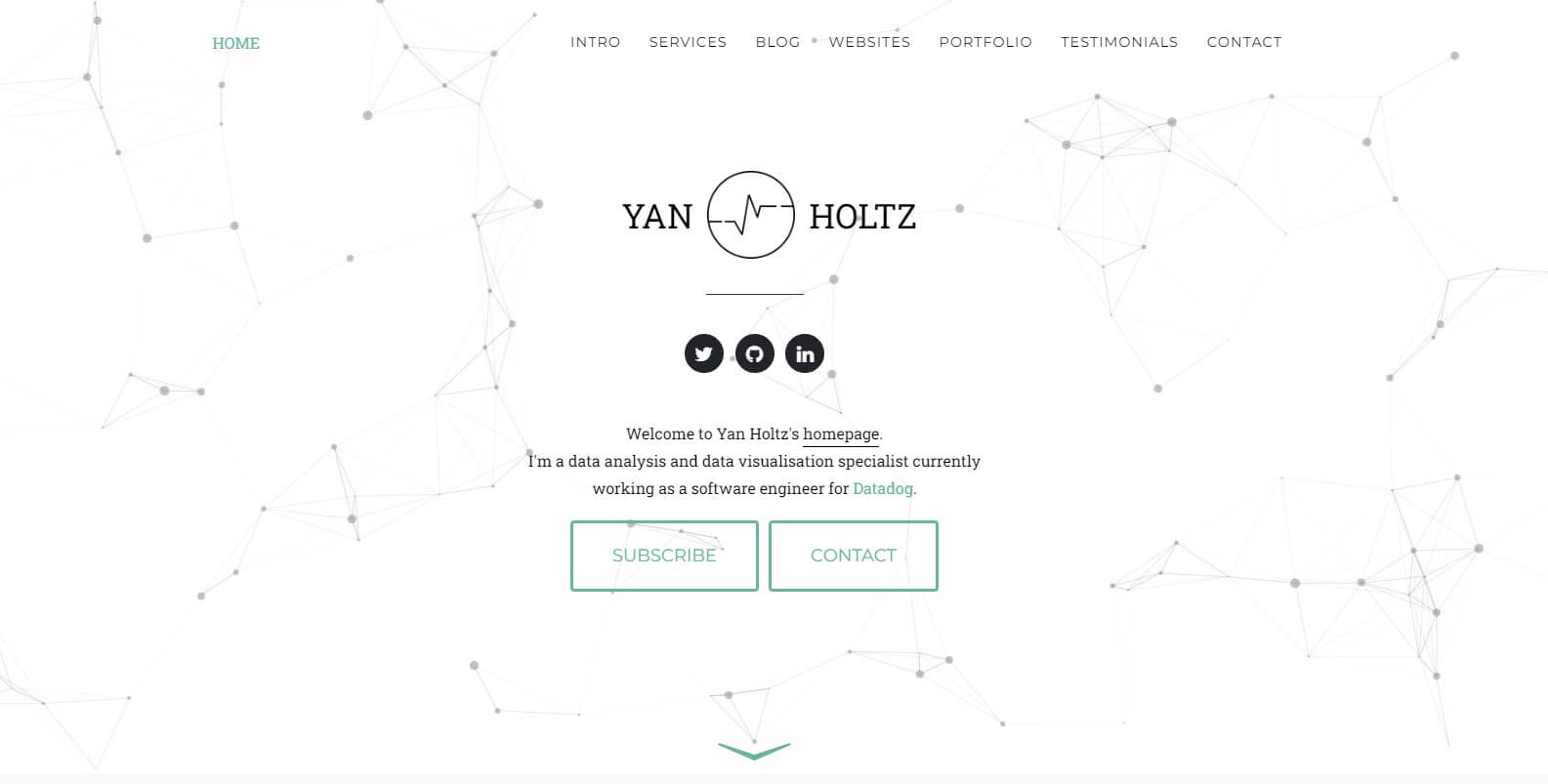
Yan Holtz is a specialist in both data analysis and data visualization. He works as a program coder for Datadog, a US-based company that monitors the cloud.
You don't need to go much more for ideas on creating your portfolio. Yan's portfolio features a passionate and sleek design, especially the motion at the top of the page that moves when you move your mouse. You must keep scrolling until you get to some of the projects themselves.
A different image for each project makes you want to learn more, and clicking on it brings up a short description. Yan also has a lot of different kinds of projects, from gene sequencing to how surfers get around.
In a roundabout way, he's telling us that he can work with any information, even though he specializes in data graphics. On top of all this, he includes customer reviews, which many portfolios still need to do.
7. Jessie-Raye Bauer

Jessie-Raye Bauer works at Apple as a data scientist. Her expertise lies in cognitive psychology and statistics, earning her a Ph.D. from The University of Texas. Jessie-Raye Bauer's portfolio shows an exciting path that a job in data analytics can take you.
Many portfolios we've looked at so far have focused on the skills of the person. Jessie-Raye's data science portfolio differs from many others because it doesn't have standard project links. Instead of using case studies or direct links to GitHub projects, Jessie-Raye has decided to use her blog to show off her work. This is a better fit for her level of skill. Because her work is so complicated, it works well as a blog post. It also fits with her academic background.
8. Maggie Wolff
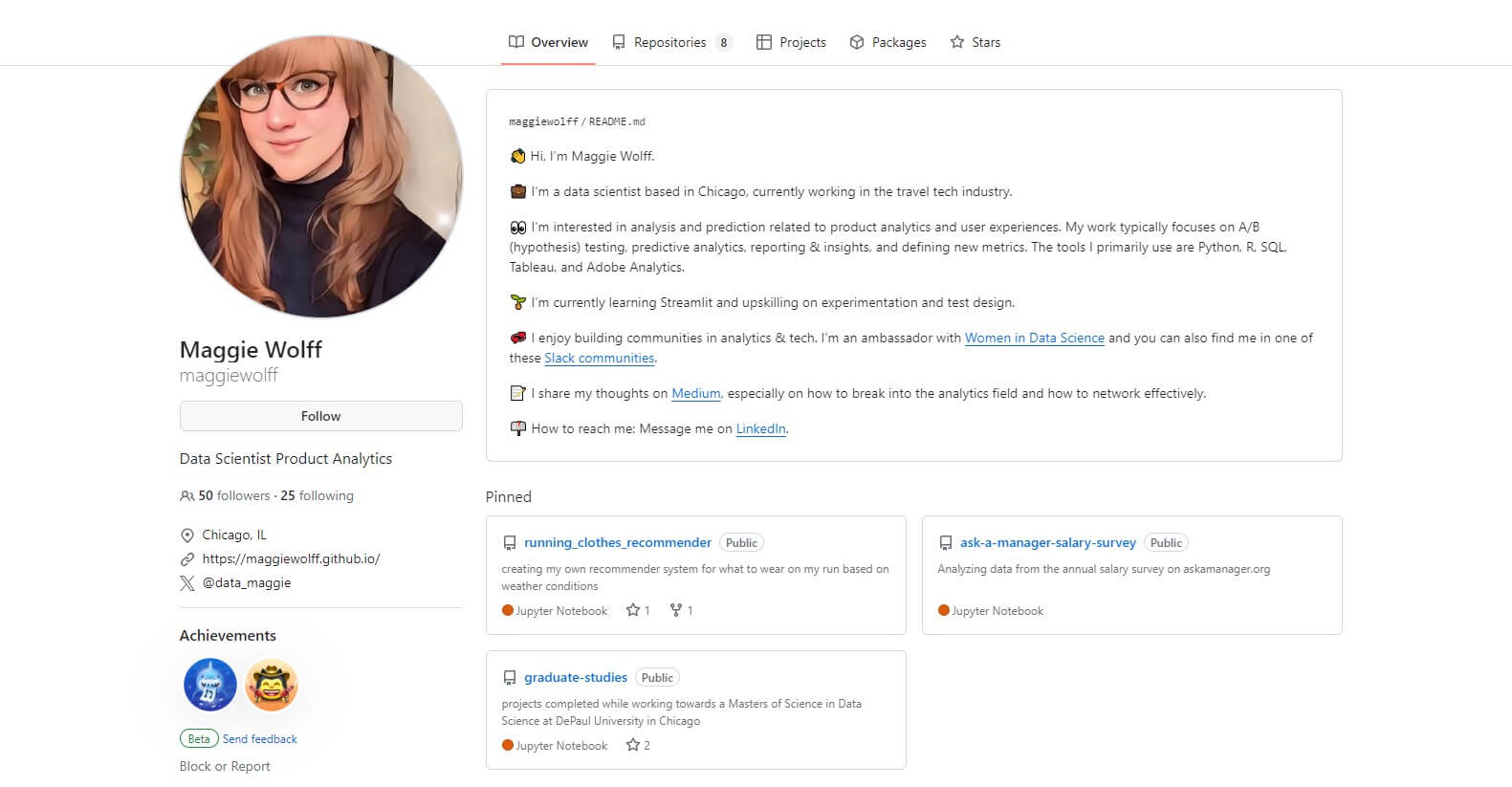
Maggie is an experienced data scientist and product analytics fan. Maggie's GitHub showcase is an excellent example of a clear, beautiful, easy-to-use site.
Do not think that the site's simplicity means a beginner made it; it was carefully put together to show some information about the person, her resume, showcase projects, and the talks she gives that are connected to her interests. There are also blog posts that talk about her journey into big data and science.
9. James Le

James Le works as a data scientist, worker in machine learning, reporter, and podcaster. He is very enthusiastic about data science, and it's clear from his resume that he eats, sleeps, and lives it!
There is much information on James Le's website about his work as a data scientist. This could be too much to handle, but he neatly divides his website into sections, making it easier for people to find what they want. Specifically, his writing, academic work, and, in our own case study, his knowledge of analyzing data.
10. Anubhav Gupta

Lastly, Anubhav Gupta is a data scientist who graduated from UC Berkeley's School of Information. He has worked for several international computer firms.
Anubhav's online portfolio itself is notable for its compactness. All the supporting details are on one short web page, which can be read by scrolling quickly from top to bottom. This method will keep everyone from getting bored or lost, which is good.
There is a clear, simple headline at the top of the page. We now know who Anubhav is and what he does. The second part of Anubhav's introduction gives us a taste of his interests, experience, and attitude. It still needs to be shorter because he saved the detailed information for his resume.
Anubhav finally starts working on his projects. His projects differ slightly from most of the others we've looked at. He thinks more about his product manager or machine learning engineer job than the projects themselves. He keeps the specifics for his case study pages. Headings, pictures, and clean style keep the message clear, engaging, and consistent.
How to present your portfolio during an interview
During an interview, showing off your data analyst portfolio is crucial to show your potential employer or companies your skills, experience, and knowledge. Here are some tips on how to show off your portfolio well:
Select pertinent projects
There should be projects related to the job and the company you are looking for in your portfolio. To get the job, you need to show that you can use data to fix problems in the real world and that you have the right communication skills and experience.
Prepare the materials
It is essential to prepare your materials carefully before any interview. Ensure your resume looks good and lists your schooling, work experience, skills, and essential data analysis accomplishments. Also, be ready to show off your projects, code, and information on a personal website or GitHub.
There should be a short account of the tools, methods, results, obstacles, and insights learned for each project.
Make a presentation
Lastly, make sure you have a presenting deck or notebook ready that briefly summarizes your main projects. This will show you that you can use precise language, complex ideas, exciting pictures, and relevant measures to tell engaging stories with data.
If you prepare this well, you can show you are an educated and skilled prospect during the first step of the interview.
Practice
Before your interview, it's essential to practice your pitch a lot. A short (10–15 minute) talk about your past, resume, and goals is ideal. Consider the questions that might come up from your projects, like how to choose data sources, test assumptions, evaluate models, share results, and find ways to improve things.
Adjust to the interview format
Change how you present yourself based on the interview style. For online interviews, ensure your internet connection is fast and that you have a backup plan in case something goes wrong with your tools. Make sure you look good, find a quiet and well-lit place, and look straight into the camera.
Bring your resume on a laptop or flash drive to in-person interviews, dress appropriately, arrive early, and ensure you look and act confident.
Communicate with the interviewer
Engage with the interviewer by showing how excited you are about data science and the job during the interview. Summarize who you are and your portfolio, focusing on your interest in working for the company.
Make sure your projects make sense and show off your skills and accomplishments. Also, ask good questions about the company's data problems, tools, and standards. Lastly, say thanks for the chance and send a thank-you email or note afterward.
Conclusion
To show possible companies your skills, experience, and love for data analytics, you need to put together a good data analyst portfolio. You show that you can find ideas, solve problems, and make choices based on facts by carefully choosing and showing your data analytics projects well.
Making a portfolio with various data analysis methods, tools, and businesses can also help your reputation and make you more appealing as a candidate. As you get more knowledge and work on new projects, remember to keep your portfolio updated and better.
If you make a good data analyst website portfolio, you'll be able to stand out in the job market and look for exciting possibilities in data analytics.
Data analyst portfolio FAQs

As Chief Editor, Darya works with our top technical and career experts at EPAM Anywhere to share their insights with our global audience. With 12+ years in digital communications, she’s happy to help job seekers make the best of remote work opportunities and build a fulfilling career in tech.
As Chief Editor, Darya works with our top technical and career experts at EPAM Anywhere to share their insights with our global audience. With 12+ years in digital communications, she’s happy to help job seekers make the best of remote work opportunities and build a fulfilling career in tech.
Explore our Editorial Policy to learn more about our standards for content creation.
read more



